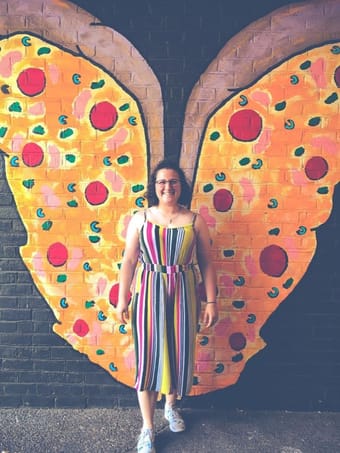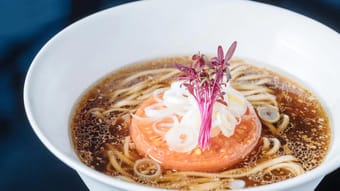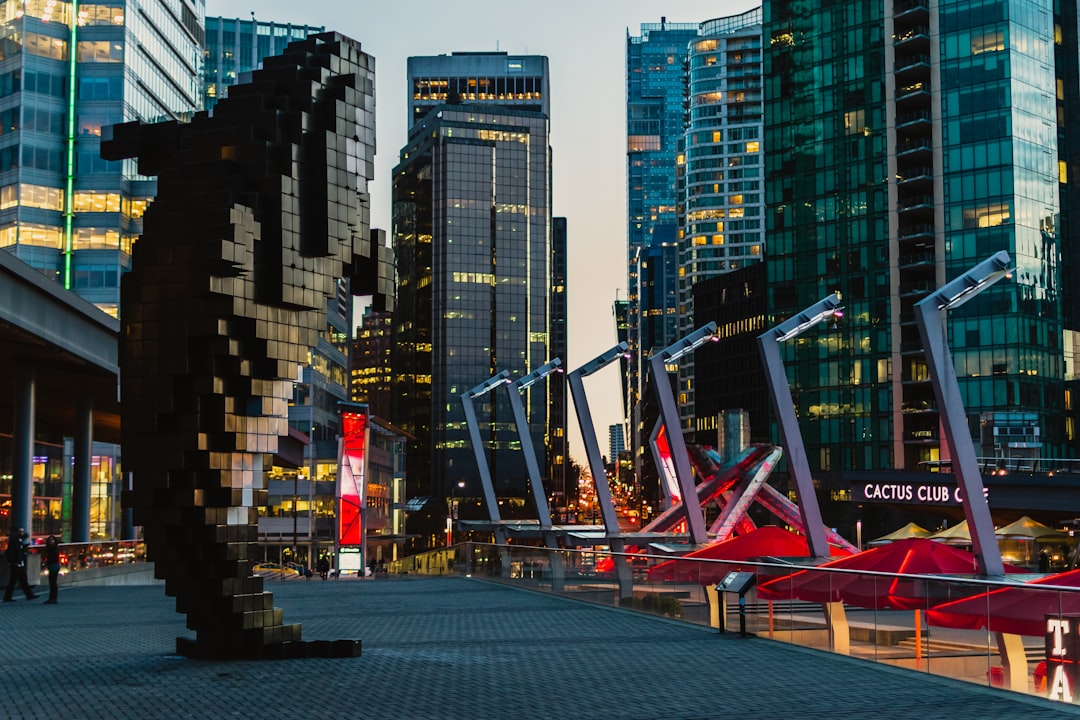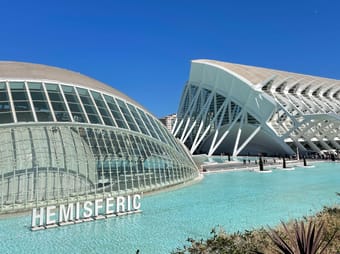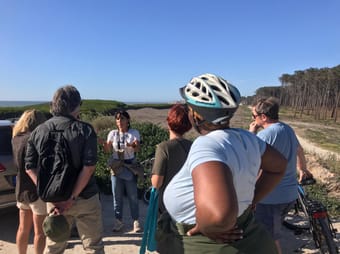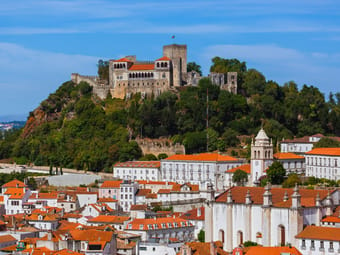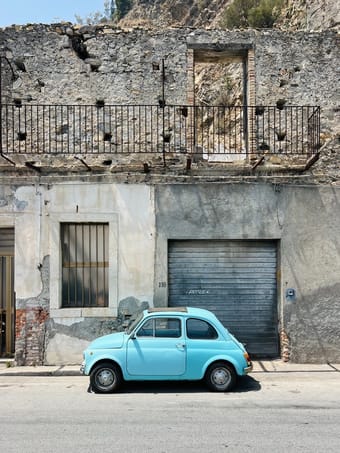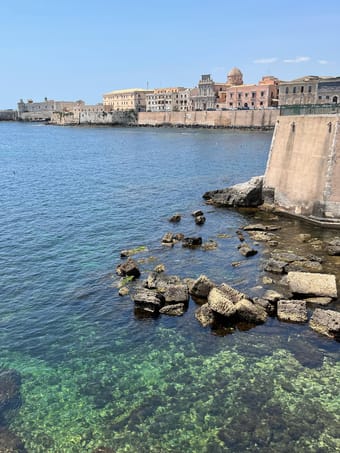Results for Munich
5-Days Budget-Friendly Itinerary For Germany
Adventure • Architecture • Budget • History • Foodie • Luxury • Nature • Sustainable/Eco • Coffee • Wine • Beach • Slow Travel • Photography • Mountain • Van Life • People & Culture • Shopping • Boutique • Art • Wellness • Faith • Overlanding • Romantic • Design • Camping • Road Trip • Relaxation • RV
Free
2
Nashville's streets are alive with the rhythm of artistry, and I've curated a guide to the city's most captivating murals paired perfectly with must-try munchies in Nashville. From savory Southern staples to indulgent sweet surprises that will tantalize your taste buds and leave you craving more.
Female Solo • Art • Budget • Foodie • Photography
$5.00
0
A digital travel guide containing vegan, vegetarian, macrobiotic, organic, and gluten-free restaurants in Japan.
Majority of them are located in Tokyo, but I've also included some excellent spots in Kyoto and Fukuoka.
🌟 I’ve organized each restaurant with a convenient category that explains what type of food they serve
🌟 I’ve also included links to their websites/social media.
This guide contains 50 locations with many varieties of food, including:
🍰🍩 desserts
🍜🥢 ramen
🌮🍔 international cuisine
🍛🍱 Japanese food
☕️🥪 cafes and bakeries
💖💰 higher end restaurants for a special meal
📌 This guide also includes a zero-waste Guesthouse that has an earth-friendly plant-based café and bar, that sells by weight, without trash.
💕✨ I've also created a FREE vegan and vegetarian Japanese word and phrase list to help you navigate Japan, so you can just show people your phone, and point.
I’ve also including a handy Gluten Free phrase and help guide, too.
My hope is that even if you don't purchase my guide, these free phrase lists will at least help you! ✨
☆︶︶︶︶☆ ︶︶︶︶☆
Helpful Terms for Vegan and Vegetarian travellers:
The more commonly used terms:
vegetarian: ベジタリアン (beh-ji-tarian)
vegan: ヴィーガン (vui-gan) OR ビーガン (bee-gan)
The more traditional terms:
Buddhist vegan: 完全菜食主義者 (kanzen saishoku shugisha)
vegetarian 菜食主義者 (saishoku shugisha)
☆︶︶︶︶☆ ︶︶︶︶☆
NOTE: Even if you’re vegan, it’s good to start with this phrase, “beh-ji-tarian des” (I’m vegetarian) since it is already rare to be a vegetarian in Japan.
Saying you’re vegan will go over many people's heads, so if they say that they "can’t serve a vegetarian", they definitely can not serve a vegan.
Some helpful phrases you can keep handy on your phone:
I don’t eat meat, seafood, eggs and dairy products
肉とシーフードと卵と乳製品を食べません
(o-niku, shifudo, tamago, to nyūseihin wo tabemasen)
I don’t eat pork
豚肉を食べません
(buta niku wo tabemasen)
I don’t eat chicken
鶏肉を食べません
(tori niku wo tabemasen)
I don’t eat fish stock
魚のだしを食べません (sakana no dashi wo tabemasen)
I don’t eat eggs
卵を食べません
(tamago wo tabemasen)
I don’t eat cheese
チーズを食べません
(chizu wo tabemasen)
☆︶︶︶︶☆ ︶︶︶︶☆
How to express having an allergy:
I am allergic to shrimp
エビのアレルギーがあります
(ebi no arerugi ga arimasu)
For example:
I am allergic to _____________________
_____________________ の アレルギーがあります
_____________________ no arerugi ga arimasu
☆︶︶︶︶☆ ︶︶︶︶☆
GLUTEN FREE TIPS:
Many Japanese dishes contain soy sauce and/or miso, and most of them contain gluten.
I am allergic to wheat
小麦アレルギーです
(Komugi arerugi desu)
麩 質 Fushitsu is the Japanese word for gluten
グ ル テ ン sometimes it is written in Katakana, as “gu-ru-ten”
Things to avoid:
小麦, 小麦 粉
Komugi is wheat, komugiko is wheat flour.
麦 Mugi is barley, usually in mugicha, barley tea. Or rye, called rye-mugi (ライ麦).
醤 油 Shoyu, or soy sauce
味噌 Miso paste
水 飴 Mizuame, or malt syrup, and barley malt syrup are in many sweets
Helpful Phrases:
I cannot eat food that contains gluten. So I cannot eat anything made with wheat, rye or barley. That means that I cannot eat soy sauce which contains wheat, or miso that contains wheat.
私はグルテンを含む食品が食べられません。小麦・大麦・ライ麦が使われているものは全部です。そのため、小麦を原料としている醤油や味噌もいっさい口にできません。
I have a serious disease called celiac disease, so that I cannot eat food that contains gluten. I cannot eat anything made with wheat, rye, or barley. I cannot eat soy sauce which contains wheat or miso that contains wheat.
私は、グルテンの摂取によって発症する「セアリック病」という深刻な病気をもっています。そのため、小麦・大麦・ライ麦が使われている食品は食べられません。小麦を原料としている醤油や味噌もいっさい口にできません。
Does this contain wheat?
これは小麦を使っていますか。
Does this contain barley?
これは大麦を使っていますか。
Does this contain soy sauce?
これは醤油を使っていますか。
When you go to a chicken grilling shop, they can dip it in a sauce which contains soy sauce, but you can ask them to do the salt sprinkled version instead:
Can you do shio-yaki (salt-flavored)?
塩だけで焼いてもらえますか。
Vegan • Gluten-free / Celiac • Vegetarian • Female Solo • Couples • Foodie • Vegan • Gluten Free • Vegetarian • Cafes and Bakeries • Japanese Food • Higher End Cuisine • Sustainable/Eco • Coffee • Wellness
$15.00
4.8
(4)
127
Málaga has transformed itself from a dinky coastal city to the gem of the Andalusian coast. Filled with wonderful art museums, beaches, historic sites, and tapas bars, Málaga is an amazing destination in and of itself and not just an airport you fly through to get to Marbella.
If you do come to Málaga, you'll want to find a good place to eat breakfast and drink coffee. Good news for you, this guide provides all the different places to drink café bonbon, eat churros and bocadillos, and munch on pastries to the content of your corazon!
Foodie
Free
6
Assalamualaikum! 🤝
So you're on Umrah or Hajj. You're hungry. Maybe thirsty?
"What is there to eat?"
"Where can I get a coffee?"
"I want a burger!"
We hear you.
We know the last thing you want to be worried about is finding somewhere to eat between praying. Whether you are looking for a quick bite or a sit down meal, this interactive food map locates a number of places where you can have a munch in the immediate vicinity of Al Masjid an Nabawi.
We've split this guide into food groups:
Fast Food 🍔 (10)
Pizza 🍕 (1)
Kebab and Shawarma 🌯 (1)
Other dining 🍽️ (3)
Cafes ☕️ (7)
Sweet Treats 🍨 (6)
Either read through the options below or use the map to pick a place you wish to visit. We've added destination info, menu's and website links where possible. Once you've decided where you want to visit, you can directly open directions on your phone's navigation app.
Don't forget to dowload the free Thatch app to get easier access.
Pssstt... We really value your insights and suggestions! If you have any ideas or comments, don't hesitate to reach out. Your feedback is invaluable in shaping the future of Muslim Travel Maps - DM us on our instagram @muslimtravelmaps or just drop us a message to say hi!
Halal • Foodie • Faith • Coffee • Budget
$6.99
1
Charlottenlund, Gentofte and Hellerup are known for their upscale living environments, access to nature, and proximity to Copenhagen's offerings, making them attractive places for residents and visitors looking for a combination of tranquility and convenience.
Hellerup: Hellerup is an affluent suburb located just north of Copenhagen, Denmark. It is known for its upscale residential areas, elegant villas, and proximity to the sea. Hellerup Strandpark, a popular beach area, offers a scenic waterfront with opportunities for picnics and relaxation. The town also features boutique shops, charming cafes, and a relaxed atmosphere that appeals to both locals and visitors.
Charlottenlund: Charlottenlund is another affluent suburb located north of Copenhagen. It's characterized by its leafy streets, grand houses, and a mix of classic and modern architecture. The town is home to Charlottenlund Palace, a historical royal residence surrounded by beautiful gardens. The nearby Charlottenlund Forest offers a peaceful retreat for walking and enjoying nature. Charlottenlund also has a marina, cultural attractions, and a refined ambiance.
Gentofte: Gentofte is a municipality and suburb situated to the north of Copenhagen. It's known for its green spaces, including parks and forests, making it a popular area for outdoor activities and relaxation. Gentofte Lake and Bernstorff Castle are notable landmarks in the area. The town center offers a blend of shops, restaurants, and cultural amenities, creating a balanced mix of urban convenience and natural beauty.
Nature • Adventure • Road Trip • Wine • Relaxation
$10.00
0
Your all-in-one beach bum guide for Algarve, Portugal
Located in the southern most coastal region of continental Portugal, is the district of Faro but better known to most as the Algarve includes 16 municipalities and some of Portugal´s best beach destinations. A holiday often focused around golf and the beach! Known to be Portugal´s biggest and most important tourism region.
Here’s what you’ll find in this neighbourhood village guide:
🏖️ Top Beaches in Algarve to Visit
🏝️ Best Beach Tips in Algarve
⛵️ Algarve Boat Tours & More
🚊 Transport
🗺️ Interactive Map
📝 Sample Itinerary - Full beach day in Algarve
**This guide will be continuously updated with more of the top 20 beaches in Algarve, Portugal. (Staying up to date with the season & trends)
If you find this information helpful, any tips are appreciated for my work :)
Families • Backpackers • Solo Female • Couples • Groups • Adventure • Budget • Nature • People & Culture • Photography • Van Life • Road Trip • Beach • Relaxation
Free
6
Metro Vancouver Summer Travel Guide
Our Premium Travel Guide is packed with destination inspiration to help you make the most of your visit this summer. You'll find over 40 curated places for you to discover with:
- Free and paid attractions around Metro Vancouver
- Shopping and dining recommendations
- Transportation tips and recommendations including airports, airlines, rail and bus lines, public transit and more
- Plus: Interactive maps, photos, videos, links and more.
Our guides are perfect for the solo traveller, partner travel and family travel.
Located on the west coast of Canada, Metro Vancouver is made up of 22 municipalities from small towns and villages, like Belcarra and Bowen Island, to major cities such as Vancouver, Richmond and New Westminster.
Based in Vancouver, British Columbia, City Trail Wander publishes walking and cycling videos on YouTube of the Metro Vancouver region and beyond.
Adventure • Foodie • History • Shopping • Nature • People & Culture • Relaxation • Romantic • Budget • Photography
$11.00
$20.00
45% off
0
Valencia is the capital of the autonomous community of Valencia and the third-most populated municipality in Spain. It's a Mediterranean city with culture, festivals, gastronomy and nature.
Backpacker • Couples • Digital Nomads • Groups • LGBTQ+ • Female Solo • Plus Size • Car-free • Adventure • Architecture • Art • Budget • Coffee • Foodie • History • Outdoors • People & Culture • Photography • Relaxation • Romantic • Slow Travel • Wine
$5.00
0
Your all-in-one top scenic route for paddle boarding guide in Algarve, Portugal
Located in the southern most coastal region of continental Portugal, is the district of Faro but better known to most as the Algarve which ncludes 16 municipalities and some of Portugal´s best beach destinations. A holiday often focused around golf and the beach! Known to be Portugal´s biggest and most important tourism region.
Here’s what you’ll find in this paddle boarding route guide:
🏝️ Best Tips for Paddle Boarding / Kayaking
🏖️ Top Beaches to Visit
🤿 Places to Snorkel
🚣 Equipment Rentals
🗺️ Interactive Map
📝 Sample Itinerary - A few hours at sea along Algarve coastline paddle boarding.
**This guide will be continuously updated with more of the most scenic routes to paddle board in Algarve, Portugal. (Staying up to date with the season & trends)
If you find this information helpful, any tips are appreciated for my work :)
Backpacker • Couples • Digital Nomads • Family • Groups • Female Solo • Adventure • Budget • Outdoors • Photography • Relaxation • Sustainable/Eco
Free
1
Sologlownomad
Available for hire
Copy of Sun-Kissed Serenity: 24 hr. Solo Adventure in Puerto Vallarta☀️
Get ready for an amazing solo adventure with 24 Hours of Sun, Culture, and Beach in Puerto Vallarta guide, designed just for you! Dive into the lively streets of Puerto Vallarta, soak up the sun on gorgeous beaches, and dance to the rhythm of the waves. I've got all the girl-approved recommendations for safe and fabulous places to stay, explore, and chill. Whether you're wandering through charming Old Town or munching on tacos by the sea, this guide guarantees a fun-filled quick trip where you can soak in the culture, food and sights! Also note that this adventure can be spread out to multiple days if you are more relaxed traveler!
Please note that creating this guide required significant time and dedication. If you find it valuable, you have the option to leave a tip of your choice (every contribution is appreciated). Additionally, you can support me by following my socials in my bio!
Free
0
Get ready for an amazing solo adventure with 24 Hours of Sun, Culture, and Beach in Puerto Vallarta guide, designed just for you! Dive into the lively streets of Puerto Vallarta, soak up the sun on gorgeous beaches, and dance to the rhythm of the waves. I've got all the girl-approved recommendations for safe and fabulous places to stay, explore, and chill. Whether you're wandering through charming Old Town or munching on tacos by the sea, this guide guarantees a fun-filled quick trip where you can soak in the culture, food and sights! Also note that this adventure can be spread out to multiple days if you are more relaxed traveler!
Please note that creating this guide required significant time and dedication. If you find it valuable, you have the option to leave a tip of your choice (every contribution is appreciated). Additionally, you can support me by following my socials in my bio!
Digital Nomads • Female Solo • Adventure • People & Culture
Free
0
Between the Castle and the river Lis, Leiria was born.
Capital of the district and located in the coastal center of the country, the attraction of the municipality of Leiria is visible: rivers, beach, pine forest, lagoons, salt pans, religious and civil architecture, the monumentality of medieval buildings, museums, spas, purest popular traditions , crafts and very rich gastronomy.
Free
0
Montenegro stands out as a renowned vacation destination, known for its charming towns nestled by beautiful beaches with crystal-clear waters & vibrantly colored pebbles. Its crystal-clear waters allure travelers seeking tranquility amidst breathtaking landscapes. Montenegro hosts numerous UNESCO-listed cultural sites, including monasteries set amidst the sea, adding to its allure and rich heritage.
WHAT TO EXPECT FROM THIS GUIDE
- Useful Tips & Essential Information
- Highlights of the most famous and important towns and municipalities, including must-visit attractions and historical sites.
- Nature Site Recommendations: Top natural spots and the best activities to explore them.
- Adventure Ideas: Exciting recommendations for outdoor enthusiasts.
50+ • Backpacker • Couples • Digital Nomads • Family • Groups • LGBTQ+ • Plus Size • Female Solo • Adventure • Architecture • Budget • History • Luxury • Outdoors • Foodie • People & Culture • Photography • Relaxation • Road Trip • Romantic • Shopping • Slow Travel • Sustainable/Eco • Wellness • Wine
Free
0
This is a guide to an Island hopping itinerary of: Athens-Andros-Syros-Naxos-Paros
This guide will cover how to island hop through 4 incredible Greek Islands. It will cover things to do, places to eat, how to get around, and where to stay in each place. I have personally been to every single place included in this guide (except one! you'll see). These islands are a bit more off the beaten path than the usual tourist trail of Mykonos and Santorini. They are WELL worth visiting and should be on every travelers list! I believe you will find this guide extremely helpful and it will make your island hopping trip a breeze! I have listed personal descriptions about every single thing listed to give you a clearer idea of what to expect.
If you're interested in other islands I have also been to Santorini, Mykonos, and Milos and would be happy to explore those with you as well! I can also help with my planning process for any island adventure you may want.. believe me I've researched a ton of them!
Please also feel free to reach out to me through email: planformedani@gmail.com or at planforme.dani on instagram with any questions! I really am happy to help!
Adventure • Nature • Foodie • People & Culture • Romantic • Wine • Beach • Mountain • Road Trip • Relaxation
$10.00
5.0
(1)
9
Catania – Taormina – Syracuse 🇮🇹 Where to go • What to see • Where to stay • What to eat & much more! 💥 Explore Sicily in three epic days, with Catania as your home base 🌋.
Backpacker • Car-free • Couples • Family • Female Solo • Architecture • Foodie • History • Photography • Art
$26.25
$35.00
25% off
18
On the southeastern coast of Sicily, with an history that spans three millennia, lies the city of Siracusa (Syracuse). At its peak it was one of the most important city of the Mediterranean and, according to Cicero, it was also "the most beautiful of all". Today, traces of history can be found all over the city but the highest concentration of monuments is on the island of Ortigia, the historic center of the city.
This walking tour includes:
- 🥾 Step by step directions guiding you to all the most important sites in Ortigia
- 🗺️ Information about what you will see along the tour
- 🛏️ Practical suggestions, including hotels, to help you plan your trip
Walking around Ortigia you will explore the ruins of Greek temples, Baroque monuments and churches, hidden remnants of the Jewish past in the city, a Norman castle, stunning views of the natural harbor of Siracusa and of the open Mediterranean, and much more!
Architecture • Art • History • People & Culture • Photography
Free
11
Try ThatchGPT


